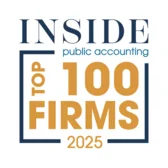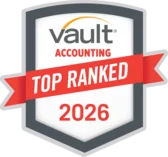Is your business set up to get the new lease accounting standards implemented? Many companies are quickly realizing that the new lease standard is going to take much more time and available resources than they had originally realized. Part of the process of making a successful transition is using the right software solution, processes and procedures to ensure the change goes smoothly. By taking a few steps now, you can prepare ahead of time so that you'll be able to successfully implement the new standard changes smoothly and efficiently.
What Is the Lease Standard Change?
About five years ago, ASC Topic 842, Leases, was released by the Financial Accounting Standards Board (FASB), showcasing changes in how companies can account for leases under Accounting Principles Generally Accepted in the United States of America, or U.S. GAAP. A similar standard was then issued by the International Accounting Standards Board, or IASB, as IFRS 16, which impacts all entities reporting beneath the International Financial Reporting Standards.
These new lease accounting standards are going to go into effect in the next few months, and they're able to impact a wide range of organizations. The new standards will impact private companies that have fiscal years that are starting after December 15, 2021, providing an effective start date of January 1, 2022, for most companies that follow the calendar year for accounting purposes. That's just a few short months away.
The new standards will require that all assets identified in agreements as leases with terms of a year or longer be listed on the company's balance sheet, capitalized as a Right of Use, or ROU, asset, with the lease offset as a liability. This pair of assets and liabilities are to be determined using the discounted cash flow analysis process while implementing specific discount rates. This process will require great care when determining what impact this process will have on the financial reporting of the ROU asset and new liability.
Potential Issues with the New Lease Accounting Standards
The new lease standards are going to be more complex in implementation, including the amount of time and resources it will take to set into place. There are several specific issues that you're going to need to carefully navigate to ensure cost-effective and successful transition to the new standards. Here are some top issues to consider when implementing the standard.
- Do a complete population of your leases. Gather all documentation that has leases, which can be difficult and time-consuming, but will help you have a solid idea of what exactly you'll need to deal with. Don't forget to look for related party leases, even if they're unwritten.
- Select the best lease software for your company's needs. You'll need to take a look at the style and features to determine which one has the best match to your company's needs. This software can help minimize your company's costs while providing a smooth transition to the new standard.
- Find imbedded leases. Maintenance or service contracts can be described as a lease agreement but contain identified assets that are controlled by your organization, making it an “imbedded” lease. Under the new standard, you'll need to capitalize this type of asset and account for it on your books, making it an important, but difficult to locate, type of lease.
- Decide what discount rate you should use. There are some choices in discounting your lease payments to present value, then capitalizing on your accounting books, which can use implicit rates, incremental borrowing rates or risk-free rates, but these can also impact metrics including bank ratio covenants.
- Think about impact. When adopting the change, consider third-party users of your financial statements to avoid surprises. For example, lending arrangements with financial institutions may be impacted by these accounting changes. Don't overlook being proactive with these shareholders, keeping them informed of changes due to the new standard.
How We Can Help
If you're having difficulty figuring out how to navigate the different options that are available through the new lease accounting standard, as well as how these changes can impact your company's bottom line, you're not alone. Our experienced financial, accounting and tax professionals can help you plan for this transition to the new lease accounting standards, putting your company into a position of strength. We'll help look at the impacts of leased assets and the impact it can have on your organization, past simple accounting and financial reporting practices, and can take you through a solid strategy for your transition to keep your company working effectively.
If you have any questions, please contact Michael Cole at michael.cole@hcvt.com


